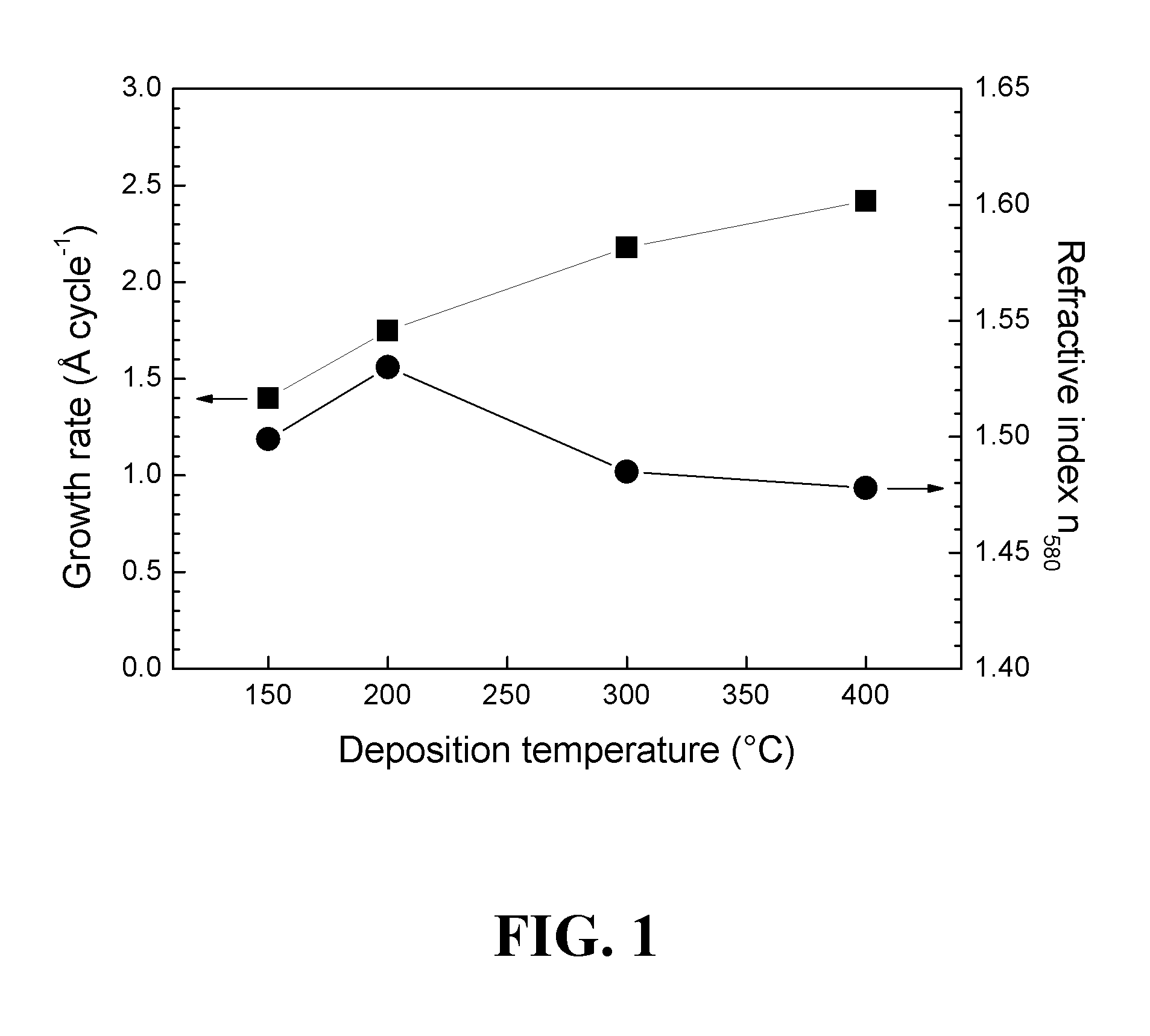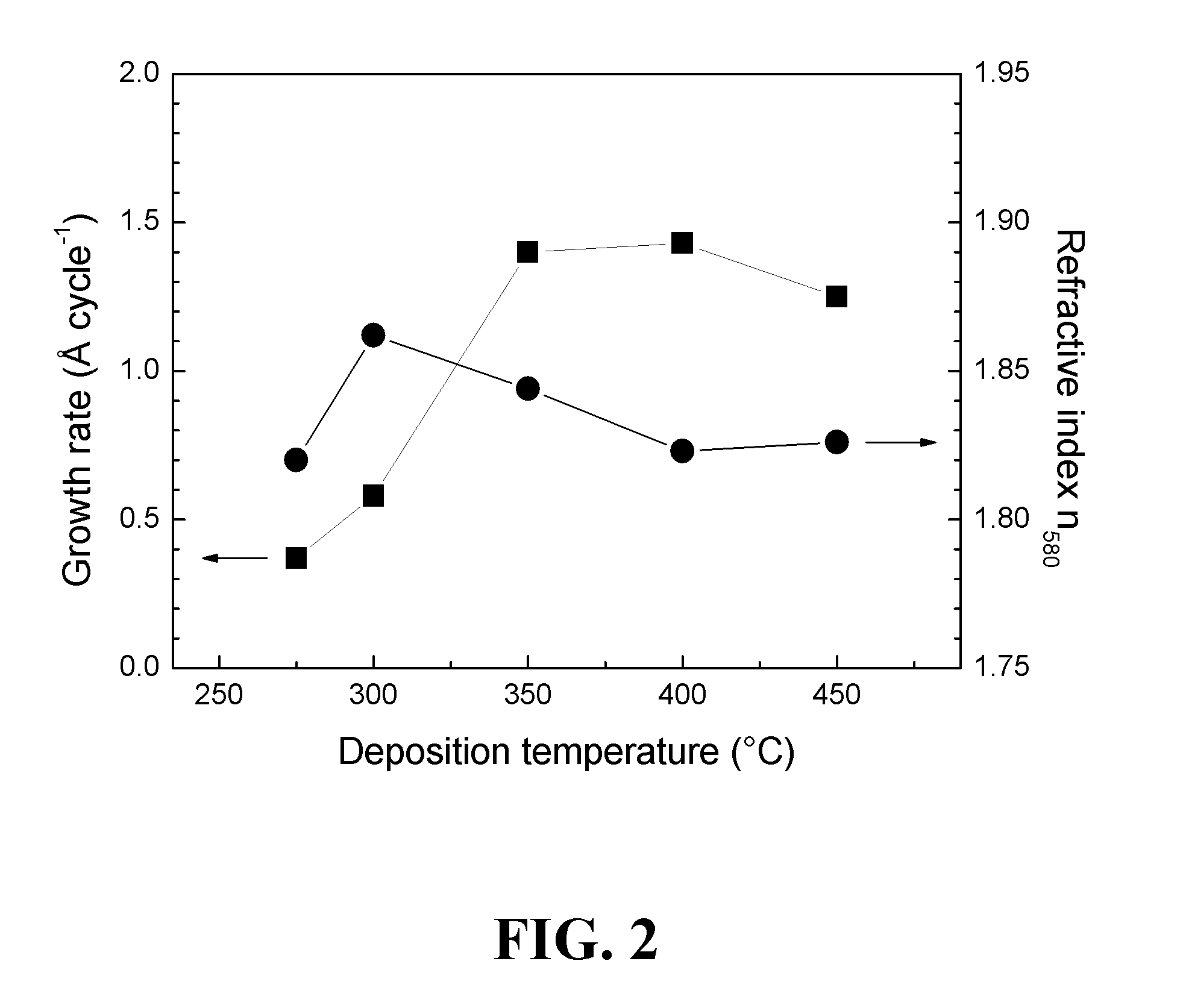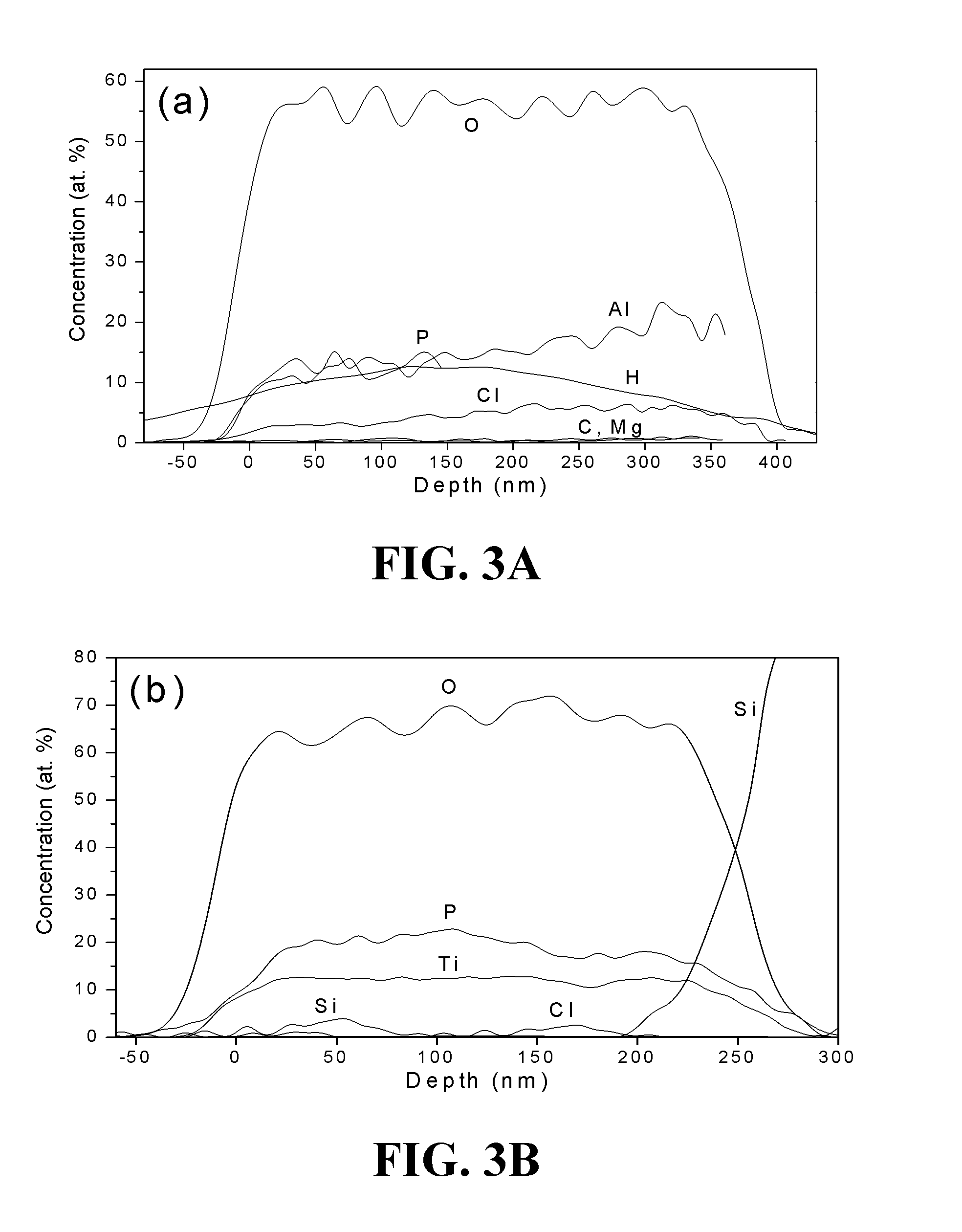Atomic layer deposition of metal phosphates and lithium silicates
a technology of metal phosphate and lithium silicate, which is applied in the direction of chemical vapor deposition coating, coating, plasma technique, etc., can solve the problems of difficult 3d battery manufacturing, limited development of ald-grown phosphate thin film process, and high cost of lithium in the film. , to achieve the effect of increasing the amount of lithium in the film
- Summary
- Abstract
- Description
- Claims
- Application Information
AI Technical Summary
Benefits of technology
Problems solved by technology
Method used
Image
Examples
examples
ALD of Titanium and Aluminum Phosphates
[0126]The atomic layer deposition (ALD) of phosphate containing thin films using reactions between metal halide and phosphorus source without any additional oxygen sources was examined. Two very common metal halides, AlCl3 and TiCl4, were used in conjunction with trimethyl phosphate (TMPO) to grow corresponding metal phosphate films. Aluminum phosphate thin films were deposited at temperatures between 150 and 400° C. while titanium phosphate films grew between 275 and 450° C. Amorphous films of Al2.6PO7.0 and Al1.6PO5.6 were deposited at 200 and 300° C., respectively, while the amorphous titanium phosphate films deposited at 300 and 400° C. consisted of Ti0.8PO3.9 and Ti0.6PO3.5 (Ti1.2P2O7). The films were analyzed using high temperature XRD to study the crystallization and stability of the deposited films. Also the surface morphology of the annealed films was examined by FESEM.
[0127]Thin films were grown in a cross-flow F-120 ALD reactor (ASM ...
PUM
| Property | Measurement | Unit |
|---|---|---|
| temperature | aaaaa | aaaaa |
| temperature | aaaaa | aaaaa |
| temperature | aaaaa | aaaaa |
Abstract
Description
Claims
Application Information
 Login to View More
Login to View More - R&D
- Intellectual Property
- Life Sciences
- Materials
- Tech Scout
- Unparalleled Data Quality
- Higher Quality Content
- 60% Fewer Hallucinations
Browse by: Latest US Patents, China's latest patents, Technical Efficacy Thesaurus, Application Domain, Technology Topic, Popular Technical Reports.
© 2025 PatSnap. All rights reserved.Legal|Privacy policy|Modern Slavery Act Transparency Statement|Sitemap|About US| Contact US: help@patsnap.com



